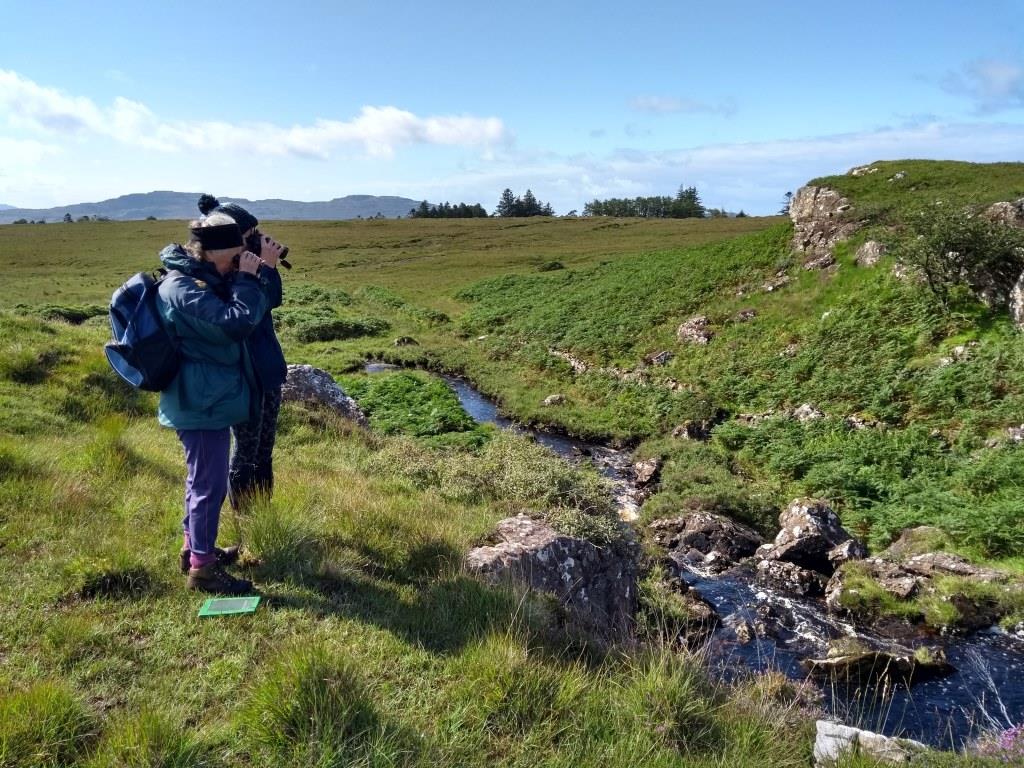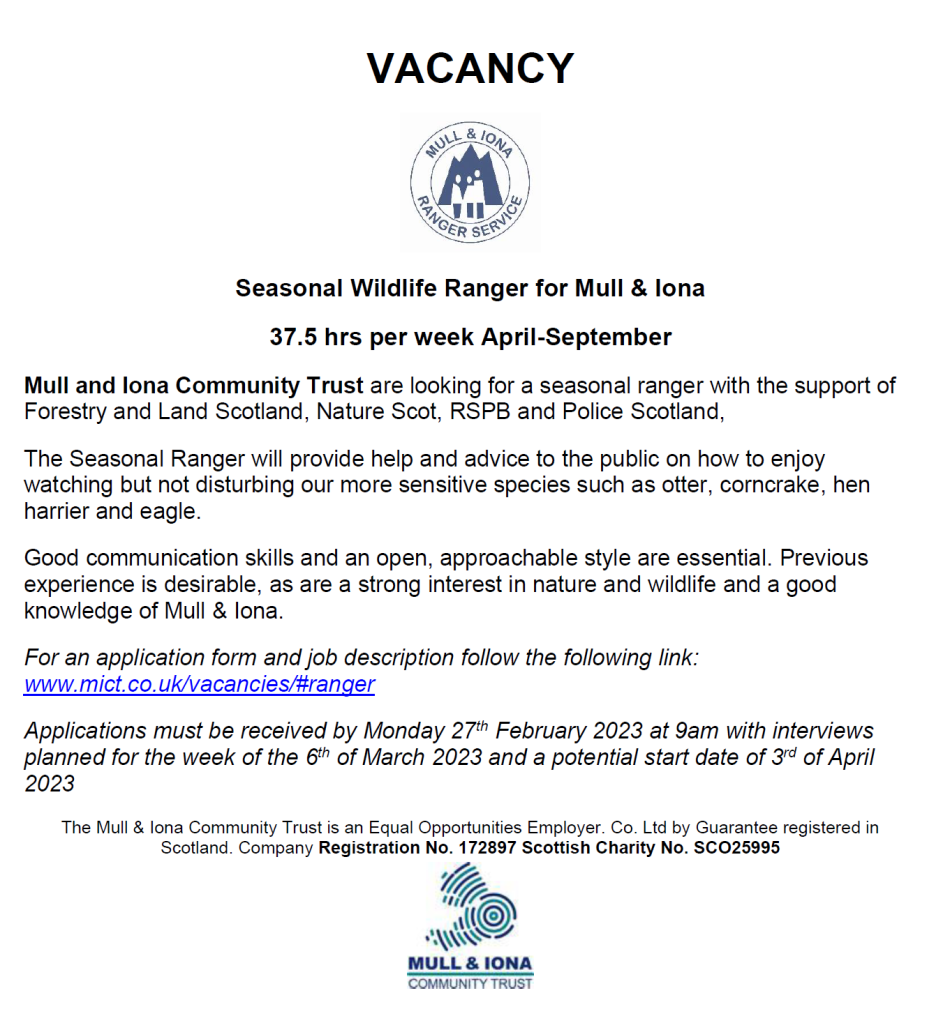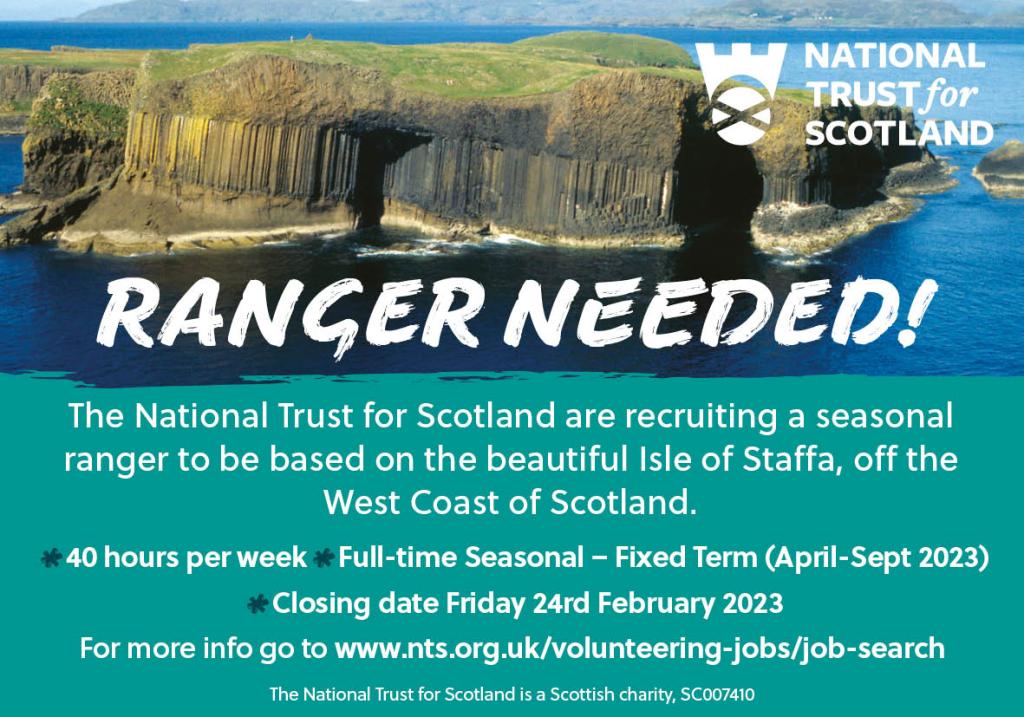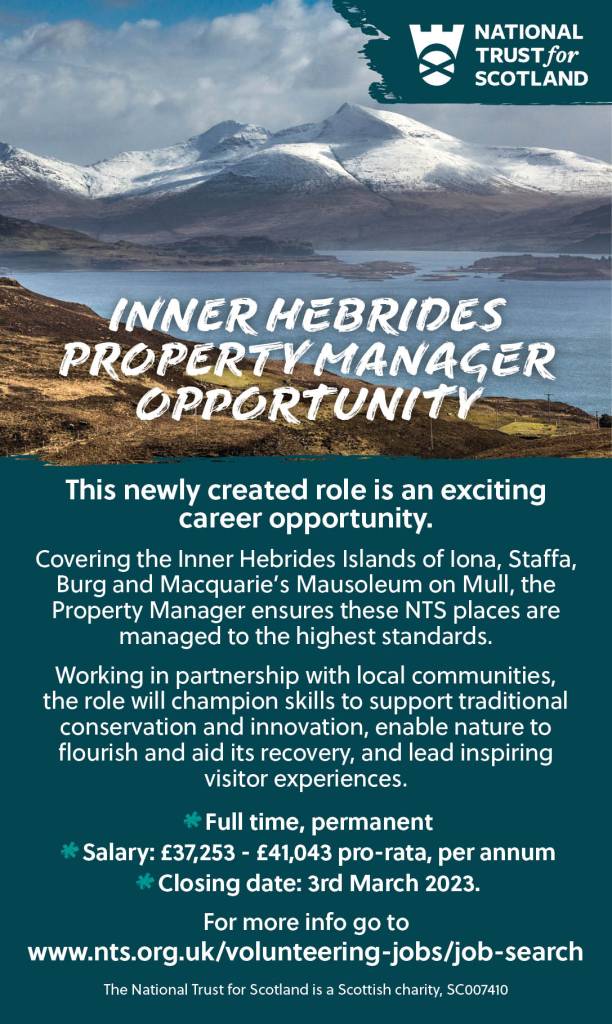They say that all good things must come to an end, and my summer volunteering with the Ranger Service is no exception. I can hardly believe it’s already been two months since I arrived on this beautiful island and I’ll soon be heading back to the mainland and home to Yorkshire.
My final week on Mull started at the Tiroran Community Woodland outreach day, where visitors ate delicious cakes while watching eagles and crossbills (so I’m told….) soaring over the trees. We held our own event, planned by yours truly, later in the week. Armed with jumbo pavement chalk, we invited anyone and everyone to come and decorate the newly completed Loch Pottie Path, which joins the villages of Fionnphort and Creich. It was great to see visiting children playing hopscotch just metres away from local poets who had written special pieces for the event.

A classic game, easier to play when you’re a child (trust me)

Translation: what a light and a great view. I’m told it rhymes in Dutch!

A contribution from one of our local poets
We did a lot of survey work this week, too. Since June I’ve regularly been out to monitor a shag colony nesting on the cliffs of Iona and my final visit on Tuesday revealed two chicks I hadn’t seen previously. Good news for a colony that was completely washed away last year!
Towards the end of the week, Emily (Ranger for South Mull, Iona, Burg and Staffa) and I were fortunate enough to spend a morning with the exceptional botanist Lynne Farrell, who has scoured Mull (and various other islands) on a mission to record the plants that live there. What I lack in botanical skill I make up for in powers of observation: we found a total of 110 different species in the small area we surveyed, more than when Lynne surveyed the same plot over twenty years ago.

Lynne and I putting our binoculars to good use to zoom in on the plants over the stream
This week is a good representation of my time here; I don’t think many people will have had a summer as varied as mine. Assisting Emily, I’ve been everything from facepainter to wildlife tour guide to researcher to photographer to teaching assistant.

‘Going Wild’ at Fionnphort beach

Taking a well-earned break while surveying the plants on Burg
I’ve listened for corncrakes under a midnight sun, wild camped with the feral goats of Burg, stood top-deck on a tour boat looking for cliff-side nests and watched a sheepdog herd ducks at my first ever agricultural show.

From left: Lizzy, Emily and me at Bunessan Show

Wild camping on Burg – before the rain came
I’ve surveyed more species than I can count, (including the endemic slender scotch burnet moth and the extremely rare Iceland purslane), and my plant ID repertoire has expanded from daisy or dandelion to include such things as selfheal, butterwort and northern marsh orchid. I’ve watched dolphins playing in the sound of Iona, photographed puffins crash landing on Staffa and laughed at my own naivety for thinking a buzzard could possibly be a sea eagle.

Can’t visit Staffa without photographing a puffin

Bottlenose dolphins are regular visitors to the Sound of Iona
Outside of work I’ve explored the white sandy beaches of Ardalanish, Uisken and Kilvickeon, climbed Ben More, Mull’s only Munro, and eaten a life-changingly delicious cheesecake at Dervaig Artisan Bakery (not in the same day, though that would have been the perfect reward). I’ve also seen one or two absolutely stunning sunsets and views to islands I can barely point out on a map.

Kilvickeon beach, one of my favourites

An incredible sunset seen from Bunessan
I’m sure I’ll be back, but for now I’ll bid a fond farewell to the island and its people. I’m particularly grateful to Emily for her patience, guidance and conversation, which has helped make this summer an unforgettable experience.
Emilie









































